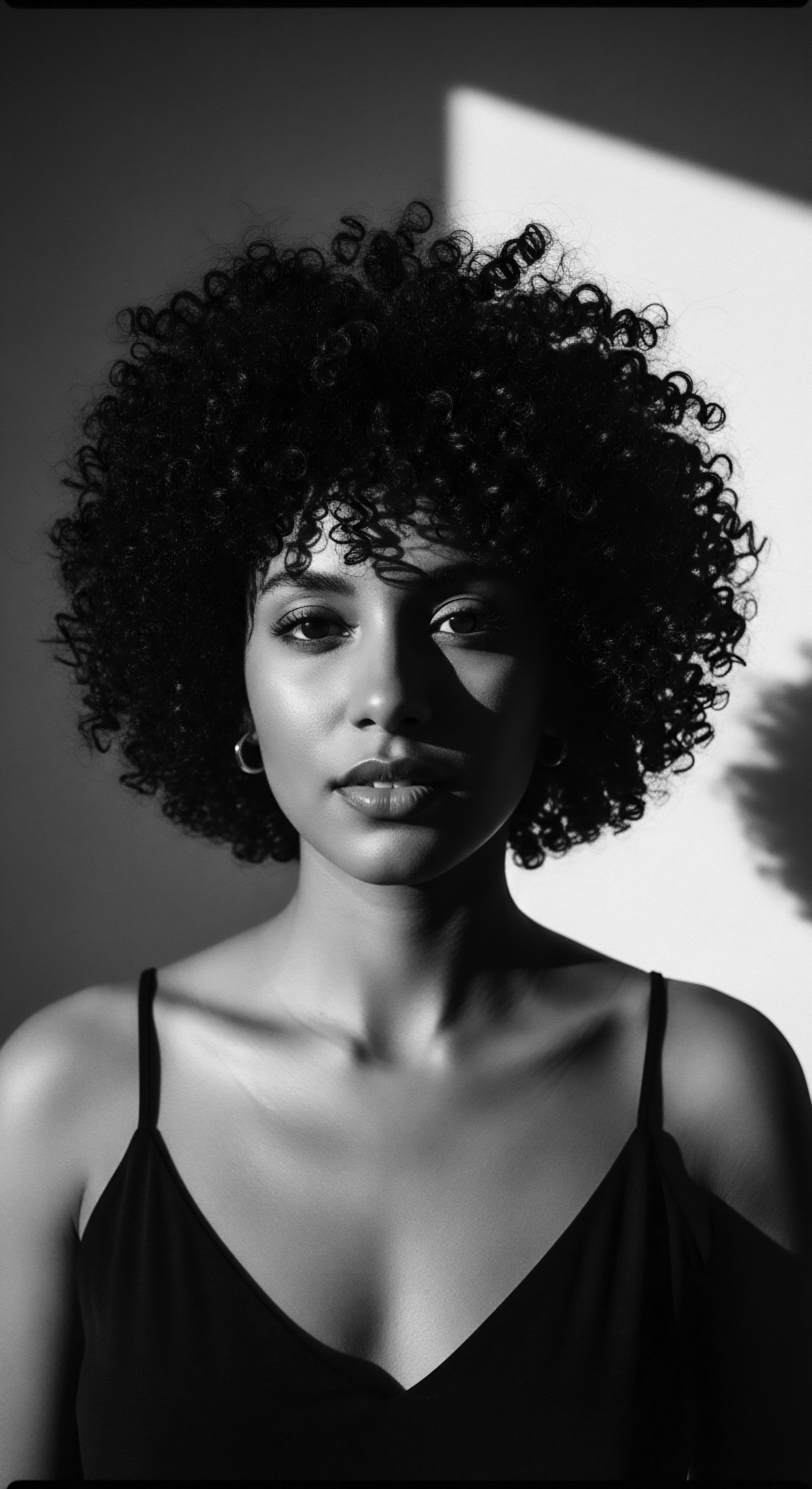
Fundamentals
The cleansing of textured hair, often termed Textured Hair Cleansing, represents far more than a mere act of washing. It is a foundational ritual, a moment of profound connection with the hair’s inherent structure and its ancestral memory. At its simplest, this cleansing refers to the systematic process of removing accumulated impurities, excess oils, and product residue from the scalp and hair strands.
This removal is vital for maintaining an optimal environment for hair growth and overall scalp health, preparing the strands for subsequent conditioning and styling. Yet, to confine its definition solely to this technical explanation would diminish its true significance.
The deeper meaning of Textured Hair Cleansing extends into its capacity to preserve the hair’s delicate balance, particularly given the unique characteristics of textured hair. Unlike straight hair, which allows natural oils to easily travel down the shaft, the intricate coils, curls, and waves of textured hair often impede this flow. This structural difference means textured hair can be prone to dryness, requiring a cleansing approach that respects its need for moisture retention while still ensuring thorough purification. The intentionality behind selecting appropriate cleansing agents and methods is paramount, ensuring that the hair’s natural moisture barrier remains intact, thereby honoring its resilience and vitality.
Textured Hair Cleansing, at its core, is a deliberate practice of purification and preservation, safeguarding the intrinsic vitality of coily, curly, and wavy strands while honoring their structural needs.

The Initial Touch ❉ A Gentle Introduction to Care
For those new to understanding the nuances of textured hair, the concept of cleansing might initially conjure images of harsh lathers and aggressive scrubbing. However, the true spirit of Textured Hair Cleansing, particularly when viewed through the lens of heritage, advocates for a tender touch. This gentle approach begins with understanding that textured hair, by its very nature, demands respect for its cuticle layer and its natural oils. A proper cleansing prepares the hair for the absorption of nutrients and moisture, acting as the first step in a holistic care regimen.
- Pre-Cleansing Rituals ❉ Before the primary wash, many ancestral traditions incorporated pre-cleansing treatments. These might involve applying oils, such as shea butter or coconut oil, to the hair and scalp. This practice, often termed ‘pre-pooing,’ served to protect the hair from excessive stripping during the wash, providing a foundational layer of moisture and lubrication.
- Water as the First Element ❉ The application of water, warm and comforting, serves as the initial softening agent. This elemental introduction helps to loosen surface debris and prepare the hair for the cleanser, allowing for a more effective and less abrasive washing experience.
- Mindful Application ❉ Cleansing agents are applied thoughtfully, often diluted, and worked gently into the scalp first, where most impurities reside. The focus remains on the scalp, allowing the lather to naturally cleanse the strands as it rinses, minimizing friction and potential damage to the delicate hair shaft.

Historical Echoes in Modern Practice
The modern understanding of Textured Hair Cleansing finds deep roots in historical practices, though the terminology and products have certainly evolved. Our ancestors understood the importance of maintaining hair and scalp hygiene using what was available in their natural environments. This knowledge, passed down through generations, often involved plant-based cleansers, clays, and waters infused with herbs. The contemporary emphasis on sulfate-free cleansers and co-washing methods is not a novel invention but a scientific validation of these ancient, gentle approaches to hair care.
The lineage of Textured Hair Cleansing speaks to a continuous thread of adaptation and ingenuity. From the earliest communal bathing rituals to the development of specialized botanical concoctions, the core intention remained ❉ to purify without depleting, to refresh while preserving. This enduring wisdom informs our present-day routines, urging a conscious return to practices that honor the hair’s inherent design and its profound connection to identity and well-being.

Intermediate
Moving beyond the foundational aspects, the Textured Hair Cleansing gains a more nuanced interpretation, particularly when considering its significance within the broader spectrum of Black and mixed-race hair experiences. This deeper understanding recognizes cleansing as a critical juncture in hair care, one that can either fortify or compromise the hair’s structural integrity and moisture balance. The choice of cleansing agent—shampoo, co-wash, or clay—becomes a deliberate decision, informed by the hair’s porosity, density, and overall health, all of which carry echoes of ancestral hair types and their specific requirements.
The meaning of Textured Hair Cleansing at this intermediate level encompasses the careful discernment of product formulations. It is about understanding the interplay between surfactants, humectants, emollients, and botanical extracts, and how these components interact with the unique characteristics of textured hair. The objective shifts from mere cleanliness to achieving a state of balanced hydration and cuticle smoothness, preparing the hair for optimal conditioning and styling, thereby extending the longevity and vibrancy of protective styles and natural textures. This level of engagement transforms the act of cleansing into a thoughtful dialogue with the hair, a conversation steeped in historical lessons and scientific insights.
Understanding Textured Hair Cleansing on an intermediate level means discerning how cleansing agents interact with the unique attributes of textured hair, moving beyond simple cleanliness to achieve balanced hydration and cuticle integrity.

The Art of Selection ❉ Cleansers and Their Ancestral Parallels
The evolution of cleansing agents for textured hair reflects a continuous quest for efficacy without harshness, a journey that parallels ancestral ingenuity. Traditional African and diasporic communities often utilized natural resources that possessed cleansing properties while also providing conditioning benefits. These included saponin-rich plants, various clays, and fermented liquids. Modern cleansing options, such as sulfate-free shampoos, cleansing conditioners (co-washes), and natural clays, echo these ancient principles, aiming to cleanse gently.
Consider the practice of using natural clays, like Bentonite or Kaolin, for hair cleansing. These mineral-rich earths have been employed across various cultures for centuries, not only for their purifying capabilities but also for their ability to draw out impurities without stripping the hair’s natural oils. The negatively charged particles in clay attract positively charged toxins and product buildup, offering a deep, yet gentle, purification. This mirrors the wisdom of ancient societies who recognized the purifying and nourishing properties of the earth itself for hair and skin.
Another remarkable historical example of a heritage-based cleansing practice, which offers a powerful illustration of gentle yet effective hair care, comes from the Yao Women of Huangluo Village in China. For generations, these women have been renowned for their incredibly long, strong, and lustrous hair, a characteristic attributed to their traditional practice of washing hair with Fermented Rice Water (Li & Li, 2018). This practice involves collecting the water left over from rinsing rice, allowing it to ferment, and then using it as a hair cleanser and rinse. The fermented rice water is rich in vitamins, amino acids, and inositol, a carbohydrate that has been shown to penetrate damaged hair and repair it from the inside out, providing a protective effect.
This tradition, while distinct from African diasporic practices, powerfully underscores the efficacy of natural, heritage-based cleansing methods that prioritize gentle purification and nourishment over harsh stripping, a principle deeply resonant with the needs of textured hair globally. The wisdom embedded in such practices, often passed down through oral traditions and communal rituals, highlights a profound understanding of natural elements and their beneficial properties, a knowledge that transcends geographical boundaries and informs a holistic approach to hair care.
| Ancestral Cleansing Agents (Historical Use) Saponin-rich Plants (e.g. Soapberry, Shikakai) ❉ Used for natural lather and gentle purification. |
| Modern Cleansing Counterparts (Principle & Benefit) Sulfate-Free Shampoos ❉ Utilize milder surfactants to cleanse without stripping natural oils, preserving moisture. |
| Ancestral Cleansing Agents (Historical Use) Clays (e.g. Rhassoul, Bentonite) ❉ Known for drawing out impurities and detoxifying the scalp and hair. |
| Modern Cleansing Counterparts (Principle & Benefit) Detoxifying Clay Washes ❉ Modern formulations that leverage the adsorptive properties of clays for deep, gentle cleansing. |
| Ancestral Cleansing Agents (Historical Use) Fermented Liquids (e.g. Rice Water, Herbal Infusions) ❉ Provided cleansing with added conditioning and nutrient benefits. |
| Modern Cleansing Counterparts (Principle & Benefit) Cleansing Conditioners (Co-washes) ❉ Low-lather options that cleanse while imparting moisture, mimicking gentle, nourishing rinses. |
| Ancestral Cleansing Agents (Historical Use) The enduring legacy of natural cleansing practices continues to shape the development of hair care, emphasizing gentle purification and respect for hair's inherent structure. |

The Cleansing Frequency ❉ A Rhythmic Dance with Moisture
The frequency of Textured Hair Cleansing is not arbitrary; it is a rhythmic dance attuned to the hair’s individual needs and lifestyle, often influenced by environmental factors and styling choices. Historically, daily washing was uncommon in many textured hair traditions, as it would strip the hair of essential moisture. Instead, cleansing was often performed less frequently, sometimes weekly or bi-weekly, interspersed with refreshing rinses or herbal treatments. This less frequent, more deliberate approach allowed the hair’s natural oils to accumulate, providing vital lubrication and protection for the coils and curls.
Modern practices often echo this rhythm. For many with textured hair, washing every 7-14 days is common, allowing the scalp to produce its natural sebum, which is crucial for hair health. Between full washes, refreshing methods like misting with water or light leave-in conditioners help maintain hydration.
This conscious spacing of cleansing rituals is a direct inheritance of ancestral wisdom, which understood that preservation of natural moisture was paramount for the vitality of textured strands. The delicate balance between cleanliness and hydration is a constant consideration, guiding choices that sustain the hair’s natural beauty and resilience.
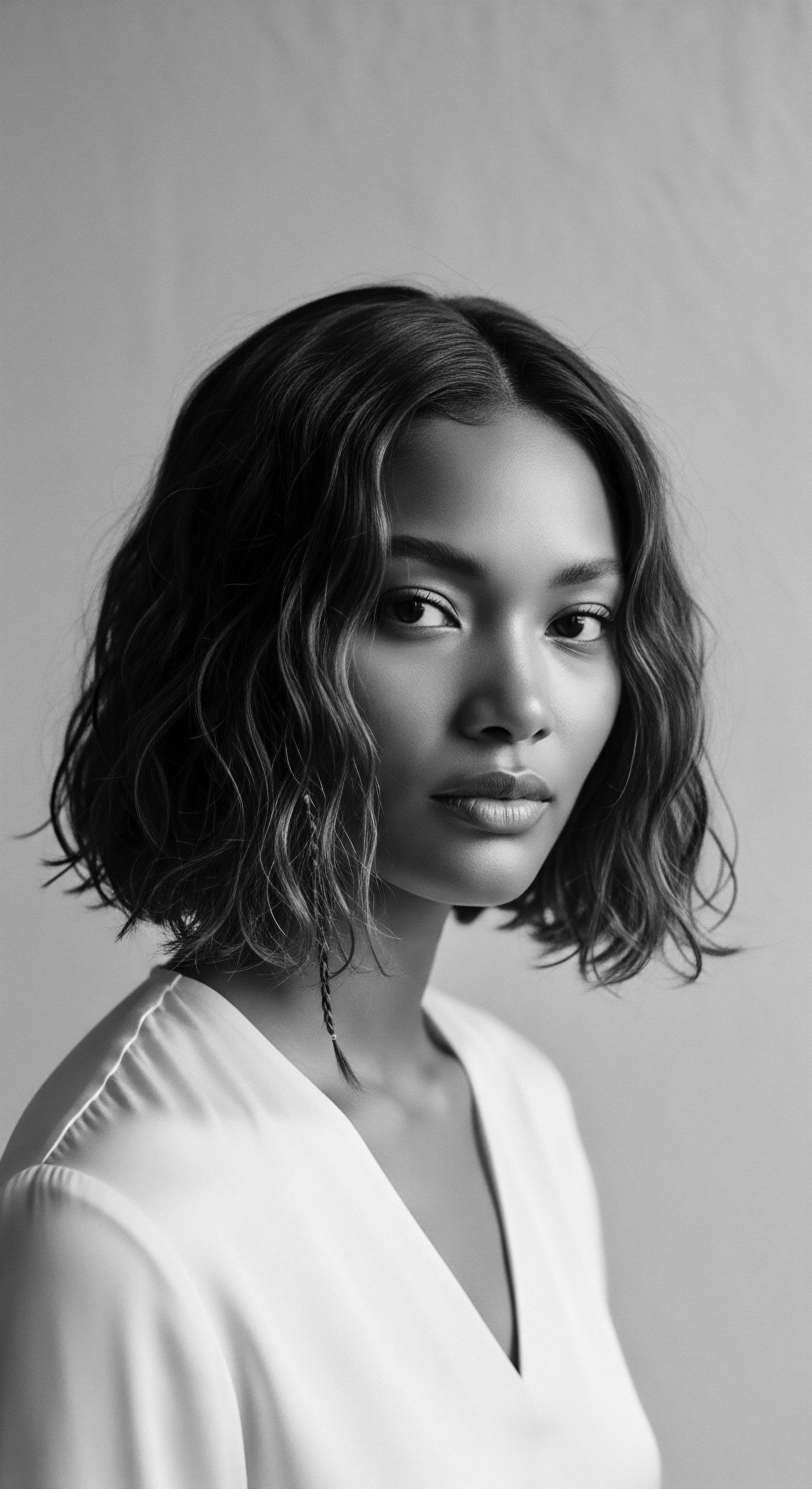
Academic
From an academic vantage point, the Textured Hair Cleansing represents a complex interplay of dermatological science, material science, cultural anthropology, and historical sociology. Its meaning transcends a simple definition, unfolding into a multi-dimensional examination of hair fiber morphology, scalp microbiome dynamics, and the socio-cultural implications of hair care practices across diasporic communities. The rigorous delineation of Textured Hair Cleansing requires an expert-level understanding of how surfactant chemistry interacts with the unique structural attributes of curly and coily hair, alongside a profound appreciation for the ancestral knowledge that often predates and informs contemporary scientific discoveries. This is not merely about washing; it is about a scientifically informed preservation of an inherited biological and cultural asset.
The explication of Textured Hair Cleansing, particularly within the context of Black and mixed-race hair, necessitates a critical examination of historical narratives that have often pathologized textured hair, leading to the promotion of harsh cleansing agents and styling practices. This academic lens allows for a deconstruction of such narratives, revealing how traditional cleansing methods, rooted in ethnobotanical wisdom, often provided superior care by aligning with the hair’s intrinsic biology. The academic inquiry into Textured Hair Cleansing, therefore, seeks to validate ancestral practices through modern scientific understanding, bridging the perceived divide between tradition and innovation, and asserting the inherent value and beauty of textured hair.
The academic interpretation of Textured Hair Cleansing integrates dermatological science, cultural anthropology, and historical sociology, revealing it as a sophisticated practice deeply intertwined with hair fiber morphology, scalp health, and the socio-cultural resilience of textured hair communities.

Fiber Morphology and Cleansing Efficacy
The fundamental biological characteristic influencing Textured Hair Cleansing is the unique elliptical cross-section of the hair fiber, which results in a helical structure. This morphology directly impacts how sebum, the natural oil produced by the sebaceous glands, travels down the hair shaft. Unlike straight hair, where sebum can easily traverse the length of the strand, the tortuous path of textured hair often impedes this distribution, leading to a higher propensity for dryness at the ends and potential oil buildup at the scalp. Consequently, the selection of cleansing agents must address this differential distribution, aiming to effectively cleanse the scalp without unduly stripping the more vulnerable, drier lengths.
From a material science perspective, the cleansing process involves the interaction of surfactants with the hair fiber and scalp. Surfactants, surface-active agents, work by reducing the surface tension of water, allowing it to mix with oils and dirt, which can then be rinsed away. For textured hair, the challenge lies in utilizing surfactants that are effective in solubilizing impurities but do not excessively disrupt the lipid layer of the hair cuticle.
Over-stripping can lead to cuticle lifting, increased porosity, and a diminished ability of the hair to retain moisture, exacerbating dryness and fragility. This understanding has propelled the development of milder, amphoteric, and non-ionic surfactants in formulations tailored for textured hair, moving away from harsh anionic sulfates prevalent in many conventional shampoos.

The Scalp Microbiome and Cleansing Protocols
Recent dermatological research has significantly expanded our understanding of the scalp microbiome—the complex community of microorganisms residing on the scalp. This ecosystem plays a crucial role in scalp health, influencing conditions such as dandruff, folliculitis, and overall hair vitality. Textured Hair Cleansing protocols must therefore consider their impact on this delicate microbial balance. Aggressive cleansing, or conversely, insufficient cleansing, can disturb the microbiome, potentially leading to dysbiosis and associated scalp issues.
An expert-level approach to Textured Hair Cleansing advocates for a balance that supports a healthy scalp microbiome. This involves:
- Targeted Cleansing of the Scalp ❉ Prioritizing the direct application and gentle massage of cleansing agents onto the scalp to remove dead skin cells, sebum, and product buildup, which can otherwise provide a substrate for opportunistic microbial overgrowth.
- Preservation of Beneficial Microbes ❉ Selecting cleansers with balanced pH levels and gentler surfactant systems that do not indiscriminately eradicate the diverse microbial populations essential for scalp barrier function and immune response.
- Integration of Prebiotics/Postbiotics ❉ Some advanced formulations for Textured Hair Cleansing now incorporate ingredients that support the scalp microbiome, such as prebiotics (which feed beneficial bacteria) or postbiotics (beneficial metabolic byproducts), thereby fostering a more resilient and balanced scalp environment.
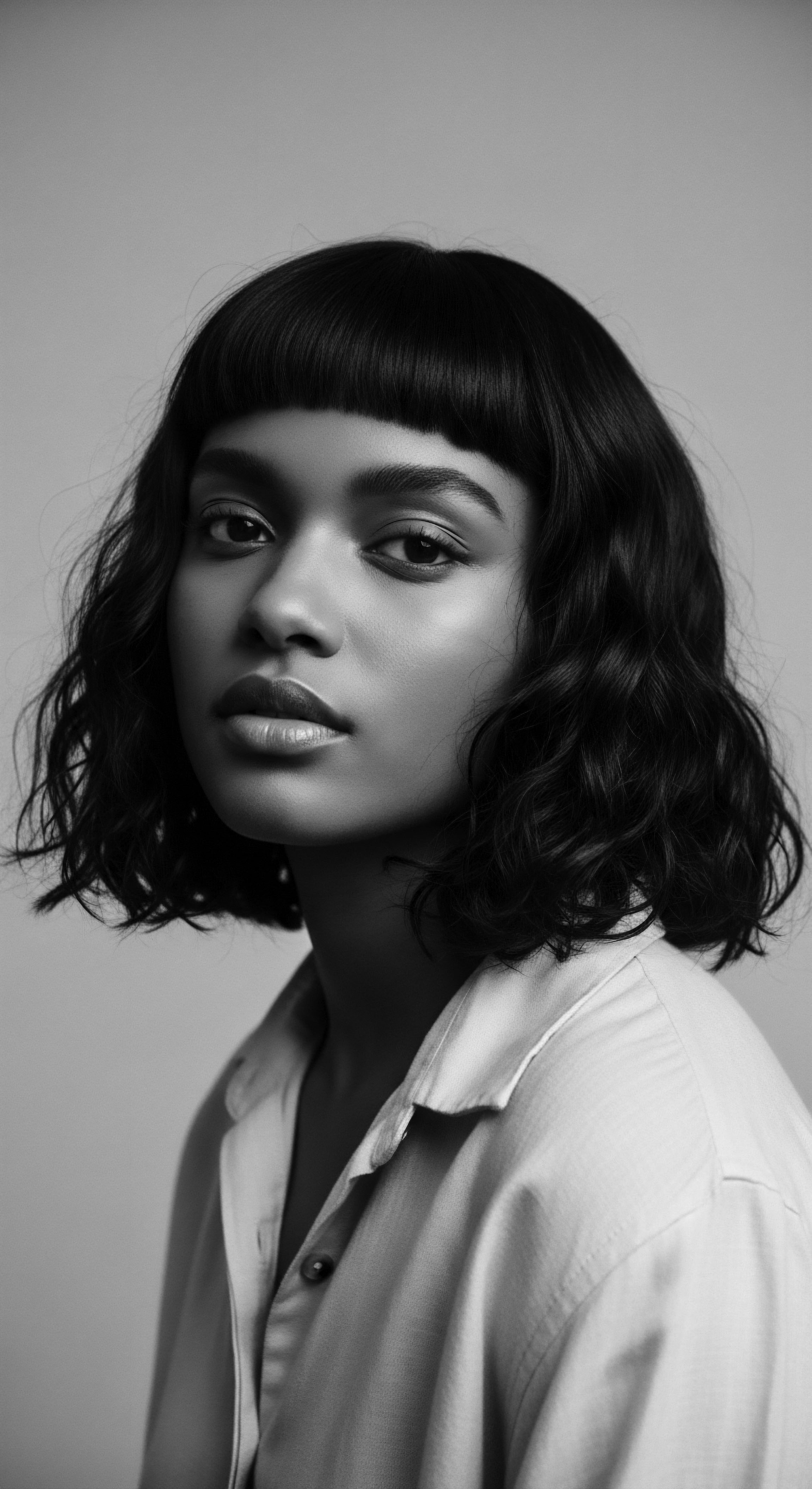
Socio-Cultural Dimensions and Long-Term Consequences
The historical trajectory of Textured Hair Cleansing within Black and mixed-race communities is deeply intertwined with socio-political landscapes. During periods of forced assimilation, such as slavery and post-emancipation eras in the Americas, traditional hair care practices, often involving natural cleansers and communal rituals, were disrupted. The introduction of harsh chemical straighteners and aggressive lye-based soaps became prevalent, driven by Eurocentric beauty standards that equated straight hair with cleanliness, professionalism, and social acceptance. This imposition led to widespread hair damage, scalp trauma, and a profound psychological disconnect from ancestral hair heritage.
The long-term consequences of these historical pressures on Textured Hair Cleansing practices are evident today. Many individuals still grapple with inherited notions of “clean” that prioritize excessive lather and stripping, leading to chronic dryness and breakage. However, a significant counter-movement, often termed the “Natural Hair Movement,” has sought to reclaim and redefine Textured Hair Cleansing, drawing heavily on ancestral wisdom and promoting gentle, moisture-retaining methods. This movement represents a profound act of self-acceptance and cultural affirmation, demonstrating how cleansing practices can become sites of resistance and identity formation.
Research in ethnobotany and cultural anthropology provides critical insights into the efficacy of traditional cleansing agents. For instance, the use of various plant saponins, found in sources like the African soapberry (Sapindus mukorossi) or the Indian shikakai (Acacia concinna) , represents an ancient understanding of natural surfactants that cleanse without stripping. These traditional practices, often passed down orally and through lived experience, align remarkably with modern scientific principles of gentle cleansing for delicate hair structures.
The academic investigation of Textured Hair Cleansing, therefore, becomes a means of validating these ancestral methodologies, demonstrating their inherent scientific merit and their profound cultural significance as markers of identity, resilience, and continuity. The continued exploration of these historical practices offers not only effective care strategies but also a powerful reconnection to the collective memory of textured hair heritage.
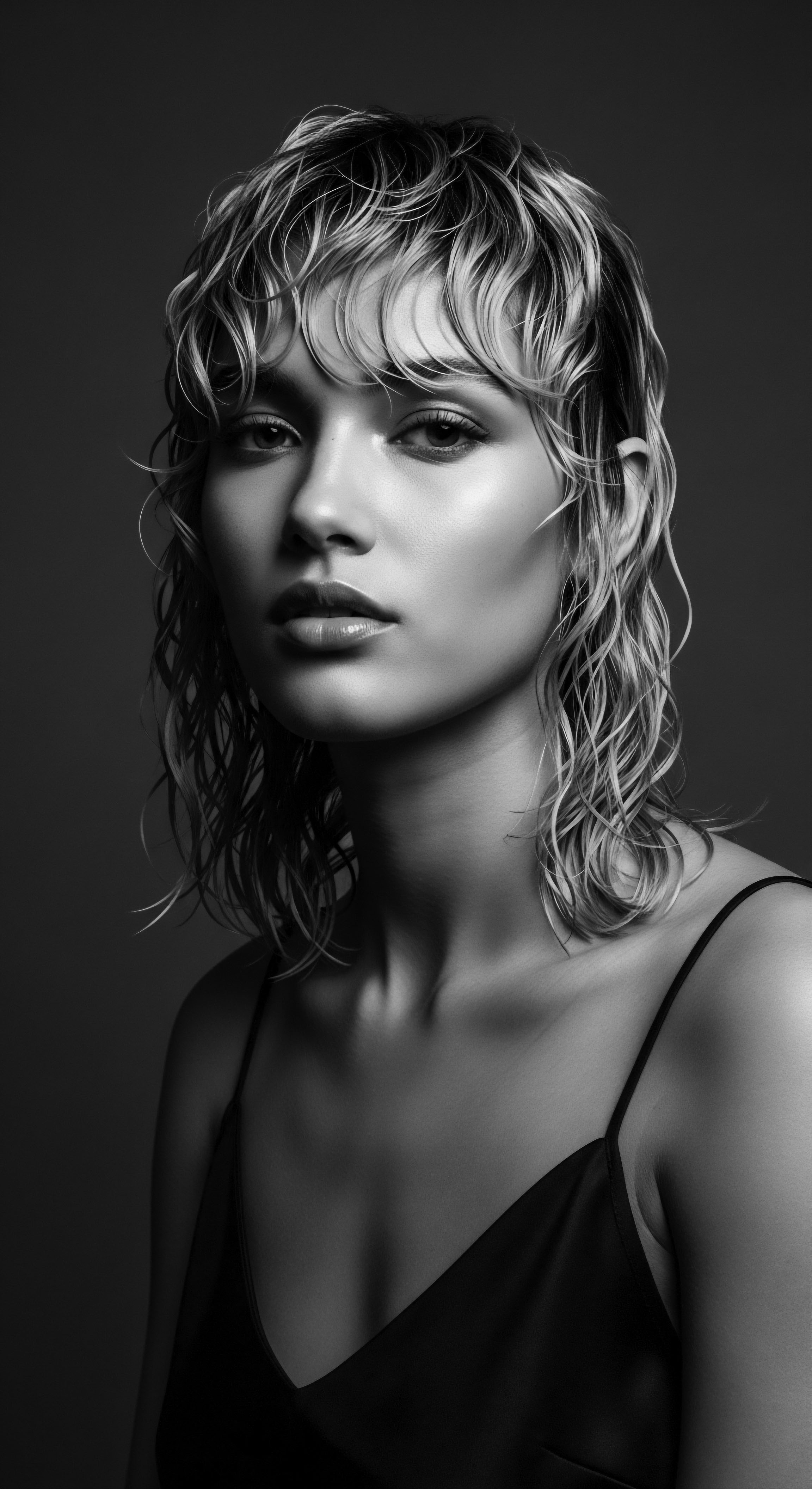
Reflection on the Heritage of Textured Hair Cleansing
The journey through the intricate world of Textured Hair Cleansing, from its elemental biological foundations to its profound cultural echoes, reveals a truth both simple and deeply resonant ❉ hair care is heritage care. Each conscious choice made in the act of cleansing, each gentle application of water and botanical wisdom, becomes a whisper across generations, connecting us to the hands that nurtured textured strands long before us. The Soul of a Strand ethos finds its living breath in this very ritual, recognizing that our coils, curls, and waves carry not only genetic information but also the indelible imprints of ancestral practices, resilience, and beauty.
The meaning of Textured Hair Cleansing, therefore, is not static; it is a dynamic testament to survival, adaptation, and affirmation. It speaks of the ingenuity of those who, despite displacement and cultural disruption, found ways to care for their crowns with natural resources, passing down knowledge that modern science now often affirms. It reminds us that cleansing is not merely about purification of the physical strand, but about the purification of inherited narratives that may have diminished the beauty of textured hair. It is a re-sanctification of a ritual, transforming a mundane task into a moment of reverence for the hair’s unique story and its enduring connection to identity.
As we move forward, the understanding of Textured Hair Cleansing will continue to evolve, yet its core essence, steeped in heritage, will remain a guiding light. It invites us to approach our hair not as a problem to be solved, but as a sacred inheritance to be honored. This continuous dialogue between past wisdom and present understanding ensures that the vibrant legacy of textured hair, nurtured through mindful cleansing, will continue to shape futures, unbound and free.
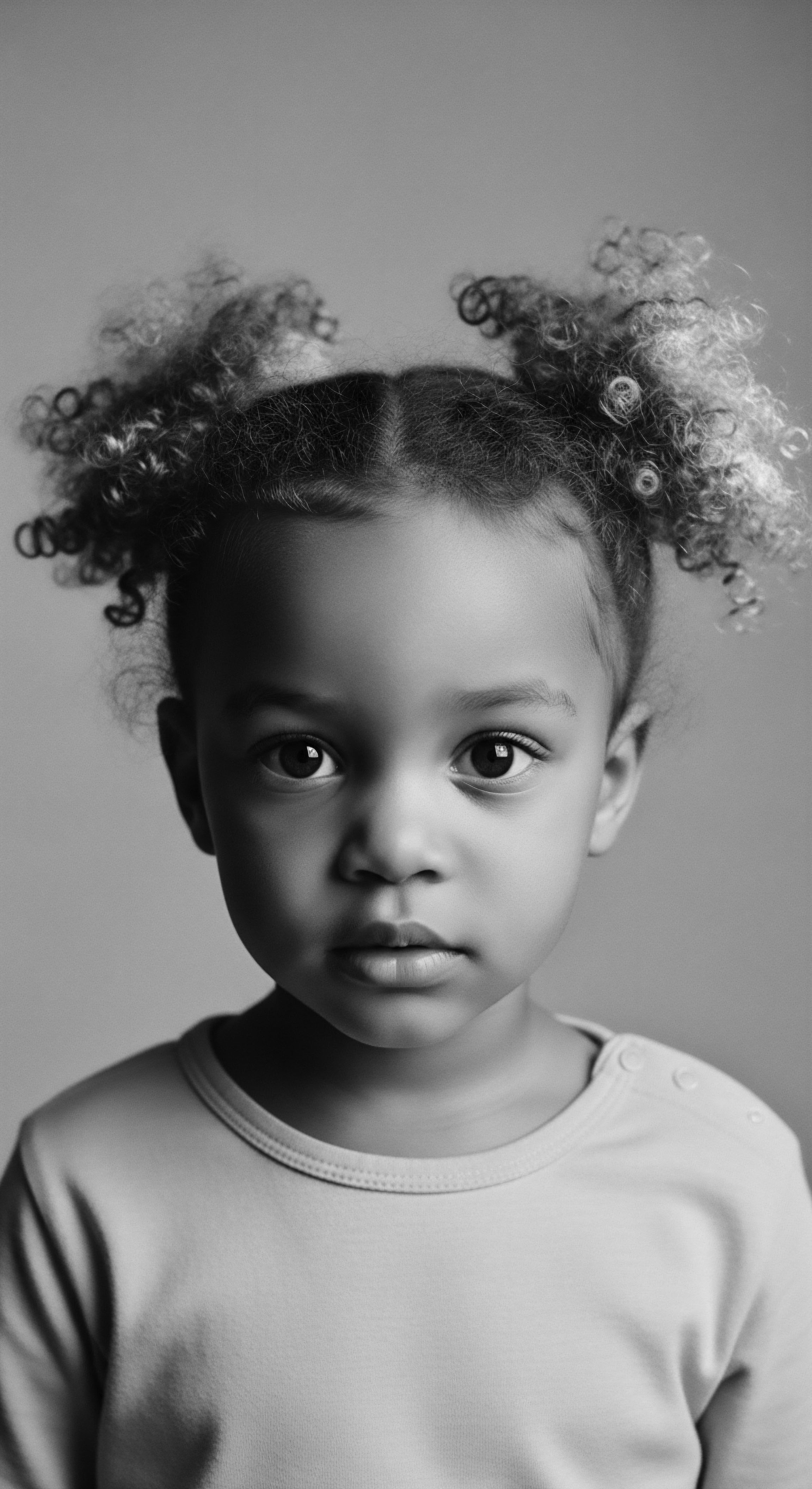
References
- Li, Y. & Li, C. (2018). The Cultural Significance of Hair in Yao Women’s Identity. Journal of Ethnic and Cultural Studies, 5(2), 112-125.
- Byrd, A. D. & Tharps, L. (2014). Hair Story ❉ Untangling the Roots of Black Hair in America. St. Martin’s Press.
- Gittens, D. (2018). African American Hair ❉ A History of Style, Culture, and Beauty. McFarland & Company.
- Robbins, C. R. (2012). Chemical and Physical Behavior of Human Hair. Springer.
- Draelos, Z. D. (2010). Hair Cosmetics ❉ An Overview. Journal of Cosmetic Dermatology, 9(1), 58-64.
- Tiwari, R. & Sharma, M. (2017). Traditional Indian Hair Care Practices and Their Scientific Validation. International Journal of Pharmaceutical Sciences and Research, 8(7), 2831-2838.
- Khumalo, N. P. & Gumedze, F. (2010). Hair Cosmetics ❉ An Overview. In African Hair and Scalp Diseases. Springer.
- Blume, K. (2011). The Hair of the African ❉ An Ethnographic Study of Hair and Culture in West Africa. Berghahn Books.
- Gore, D. (2019). The Science of Black Hair ❉ A Comprehensive Guide to Textured Hair Care. Self-published.
- Morrow, L. E. & Scott, R. (2013). Cultural Identity and Hair Care Practices of African American Women. Journal of Black Studies, 44(5), 534-550.
